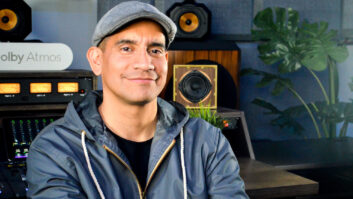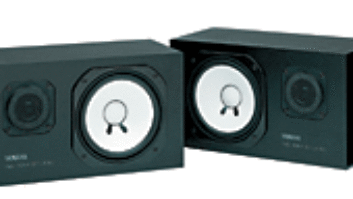
Search on “binaural”…go ahead, I dare you.
The top hit is “binaural beats,” which is a new-age-meets-potentially-real-medical-stuff-but- could-be-snake-oil method of playing tones in both ears that have a different tuning. This supposedly produces a completely different third sound that can alter brainwaves. (The theory is that, for example, with alpha brainwaves being around 10 Hz, then a 10 Hz difference between what you hear in each ear will promote alpha brainwave production.)
Next up: Wikipedia’s blurb on binaural recording, which says it’s a method that uses two microphones to create a 3D stereo sound sensation when using headphones, but won’t translate over stereo speakers. Oh, so binaural recording is 3D sound…got it.
Next up is a hi-fi website, which describes binaural recording as making your audio more immersive. Oh, so binaural recording is that “immersive” audio I keep hearing about. Cool.
But then I see that binaural signals use a conventional stereo delivery medium, with left and right channels. So I guess binaural is actually immersive, 3D stereo that can alter brainwaves. Or maybe not, because Hooke Audio says that binaural audio is not stereo, because it can localize sounds beyond just left and right.
Open Channel: How the Loudness Wars Turned Guerrilla
On Quora, one engineer says that immersive sound formats are DTS:X and Dolby Atmos, which are “literally ‘3D sound,’ although the proper term is ‘immersive sound.’” Another audio-visual system engineer chimes in that 3D audio formats use surround sound settings, but add ceiling speakers to create a more immersive experience by including height. And another person states that a “7.1 surround sound system may fill your room with sound on a 360° basis, but strictly speaking will provide only 2D sound.”
Venture into gaming sites for some different viewpoints, like “3D audio technologies are basically a means of simulating a surround sound effect in stereo headphones, while 5.1 or 7.1 surround sound configurations don’t necessarily need 3D audio effects since [they typically involve] the use of discrete speakers.”
There are also discussions about downmixing 5.1 surround to binaural. But how can you do that, if binaural requires two mics recording in a very specific manner…especially because surround isn’t the same as binaural?
So, the bottom line is binaural gives 3D sound, which is sort of like surround, but not really surround, and is carried as a stereo signal that isn’t stereo, but is immersive, although immersive audio is about surround sound, except when it isn’t.
Okay…now I understand completely!
Open Channel: Who’s Right? Who’s Wrong? Who Cares?
Of course, this also confuses consumers. After all, if you’re listening to stereo speakers in your living room, you’re surrounded by sound, right? But it’s not “surround sound.” And if you’re using a stereo playback system to play back something recorded binaurally, then you’re listening to a stereo system, not a binaural one, right?
And what’s this whole “spatial audio” thing from Apple, anyway? They say it gives multidimensional, immersive sound. Is multidimensional sound different from three-dimensional sound, or the immersive nature of binaural sound? Is it just “binaural” sound? Or is binaural sound not really immersive?
And while we’re at it, if you want to search on filter topologies, do you look up highpass filter, high-pass filter, high pass filter, low-cut, low cut, lo-cut, or lo cut filter?
As an industry, we’re pretty good about standardizing technical specs. I know my optical S/PDIF output can go into an optical S/PDIF input, and they’ll live happily ever after. My DAW can send MIDI messages to a synthesizer, and the synthesizer will chirp along merrily, exactly as expected. But when it comes to standardizing language…we suck.
Open Channel: A Musical Legacy, Or Slip Slidin’ Away?
Publishers around the world use the Associated Press Style Manual or Chicago Manual of Style, and often require authors to abide by their standards for grammar, usage and other elements of editorial best practices. Then again, the English language has been around for a while, so we’ve had some time to work out most of the kinks. In the technology world, the never-ending avalanche of innovations generates new terms and descriptions, which are often driven more by marketing departments than engineers.
So we have a bunch of well-meaning people trying to describe highly technical concepts that have no precedent, in terms that nontechnical people can understand, under timing constraints dictated by the marketplace. What could possibly go wrong?
I know AES and NARAS have a lot on their plates, but maybe it’s time to think about how we can set up an industry style guide with best practices for describing technologies. Maybe all the audio industry publishers could “pull a MIDI,” and in a spirit of cooperation, create an industry-wide style guide for audio that AES and/or NARAS could bless.
There are many technical terms we can simplify and standardize. Maybe it’s time to figure out a strategy of how to make this happen.




